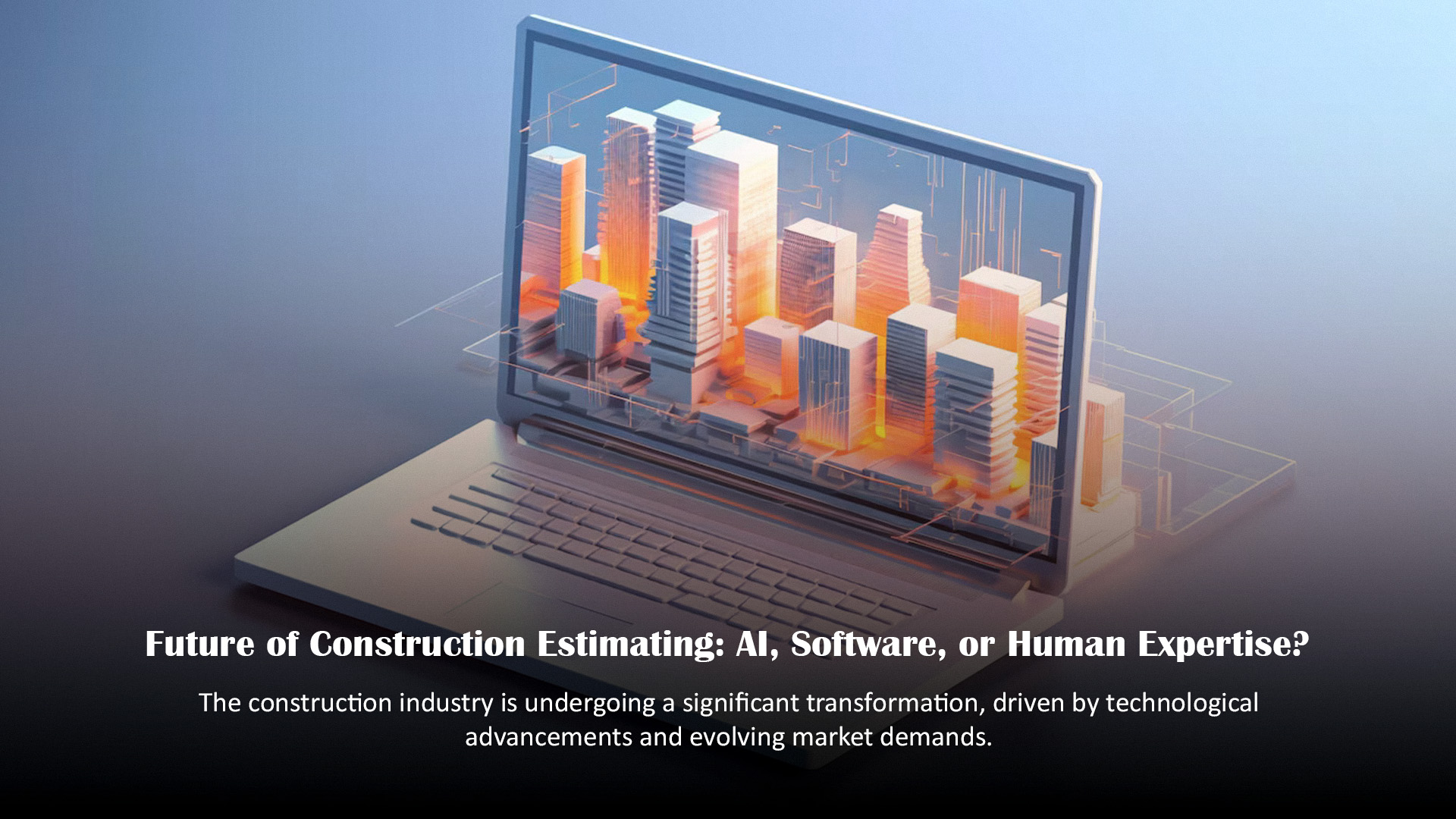The construction industry is undergoing a significant transformation, driven by technological advancements and evolving market demands. In regions like New Zealand and Australia, where infrastructure development is booming, accurate and efficient construction estimating has become more critical than ever. This article explores the future of construction estimating, focusing on the roles of AI, software, and human expertise.

The Evolution of Construction Estimating
Traditional Methods
Historically, construction estimating relied heavily on manual calculations and the estimator’s experience. While this approach allowed for personalized insights, it was time-consuming and prone to human error.
Emergence of Construction Estimating Software
The introduction of construction estimating software marked a significant shift. These tools streamlined processes, improved accuracy, and allowed for better project management. In Australia, for instance, builders estimating software has become indispensable, enabling companies to stay competitive and win more projects.
AI in Construction Estimating
What is AI Construction Estimating?
AI construction estimating involves using artificial intelligence to automate and enhance the estimation process. AI algorithms can analyze vast amounts of data, recognize patterns, and make predictions, leading to more accurate and efficient estimates.
Benefits of AI in Construction Estimating
- Speed and Efficiency: AI can process complex data sets quickly, reducing the time required for estimates.
- Improved Accuracy: By minimizing human error, AI enhances the precision of cost estimations.
- Data-Driven Insights: AI provides valuable insights by analyzing historical data, helping in better decision-making.
For example, Togal.AI’s cloud-based takeoff software automatically detects, measures, and labels project spaces on architectural plans, significantly speeding up the estimation process.
Also Read: Top Estimating Software for Residential Builders: A Comprehensive Guide
AI vs. Human Construction Estimating
The Debate
While AI offers numerous advantages, there’s an ongoing debate about its ability to replace human estimators. Human expertise brings contextual understanding, adaptability, and nuanced judgment that AI currently lacks.
Complementary Roles
Rather than replacing human estimators, AI serves as a powerful tool that complements human skills. By handling repetitive tasks, AI allows estimators to focus on strategic decision-making and client communication.
Construction Estimating Trends in 2025
Integration of AI and BIM
The integration of AI with Building Information Modeling (BIM) is revolutionizing construction estimating. This combination allows for real-time cost calculations based on digital blueprints and project modifications.
Automated Construction Takeoff
Automated construction takeoff tools, powered by AI, are becoming increasingly popular. These tools can quickly and accurately quantify materials and labor needs, enhancing efficiency and reducing errors.
Regional Perspectives
Australia
In Australia, the adoption of AI in construction estimating is gaining momentum. Companies are leveraging AI tools to improve accuracy and efficiency, addressing challenges like labor shortages and rising project complexities.
New Zealand
New Zealand’s construction industry is also embracing AI and digital tools. With a focus on sustainable building and infrastructure growth, AI-powered estimating services are helping builders manage risks and optimize costs.
Addressing Common Questions
How Accurate is AI in Construction Estimating?
AI has demonstrated high accuracy levels in construction estimating, especially when integrated with comprehensive data sets. However, the accuracy depends on the quality of input data and the complexity of the project.
Can AI Replace Human Estimators?
While AI enhances efficiency and accuracy, it cannot fully replace human estimators. Human judgment, experience, and the ability to navigate unforeseen challenges remain invaluable in the estimation process.
Conclusion
The future of construction estimating lies in the synergy between AI, software, and human expertise. Embracing AI and advanced software tools can significantly enhance efficiency and accuracy, while human estimators provide the critical thinking and contextual understanding necessary for successful project outcomes. As the construction industry continues to evolve, integrating these elements will be key to staying competitive and meeting the demands of modern projects.
Note: The information provided in this article is based on current trends and available data as of 2025. For specific project needs and the latest developments, consulting with industry professionals and experts is recommended.
